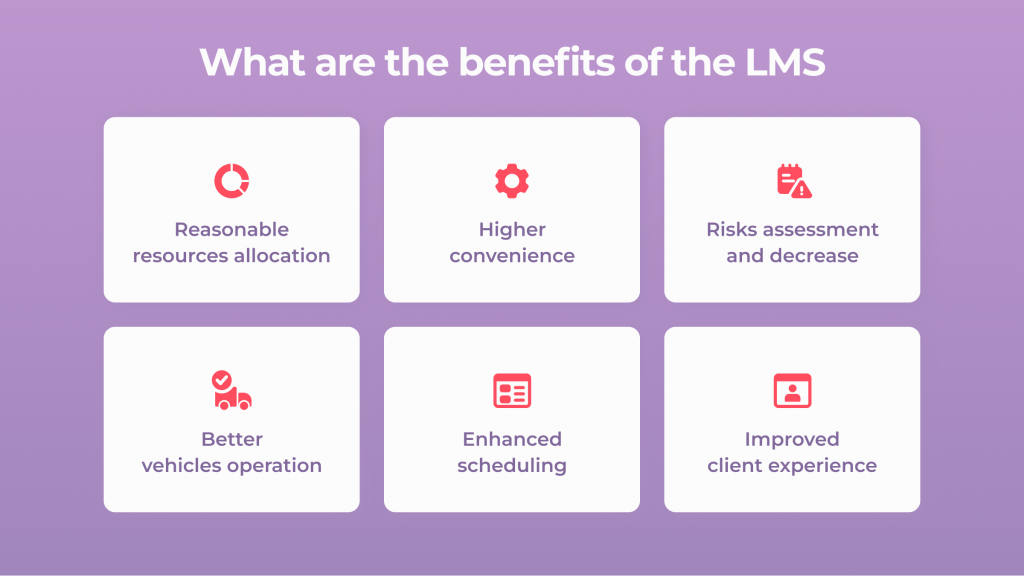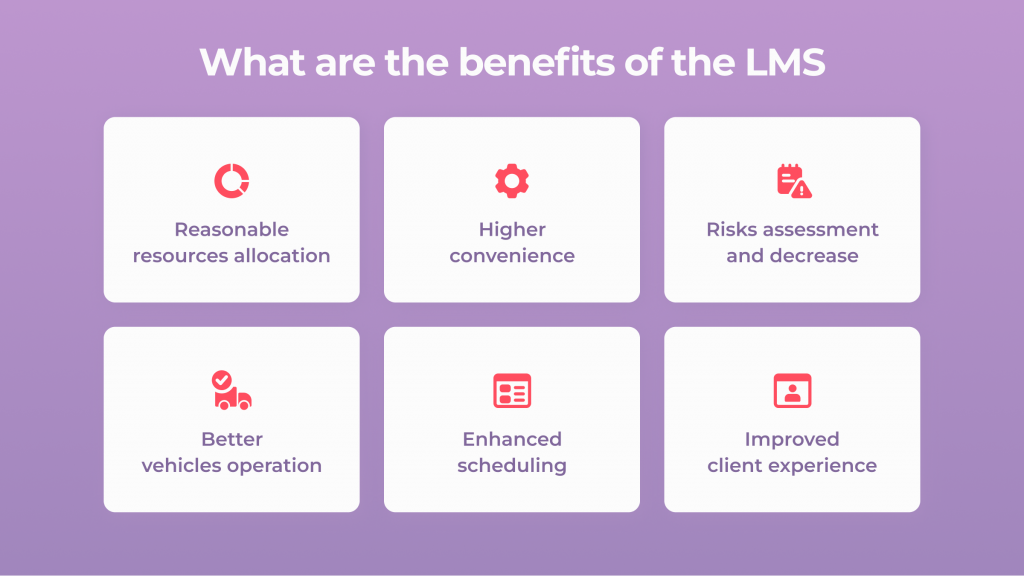
Your Guide to How a Logistics Management System Modernises the Supply Chain and Why You Should Implement one.
Innovative software solutions in the logistics industry these days are almost indispensable for supply chain optimisation. Yet, we understood the significance of such streamlining tools only when COVID-19 started spreading, as this drastically changed the demands of the logistics sector. Therefore, companies that have integrated the Logistics Management Systems (LMS) into their workflow not only possess competitive advantages and stand out from the crowd within the market but substantially maintain their post-pandemic performance.
This article explores the details of the LMS solutions, benefits, and capabilities they deliver, as well as the integration process.
Supply Chain Renovation: Market Analysis
Due to the fact that the logistics industry keeps adopting modern solutions, its digitalisation process is expected to progress to$23,607.06 within the following five years. Recent insights also indicate that 57% of entities have already made use of the new technologies implemented in the supply chain.
What are the great benefits of a LMS that motivate logistics companies to adopt it?
- The workflow enhancement and maintenance. This digital tool makes the logistics processes clear and efficient. Besides, it prolongs the facilities’ serve time and streamlines the enterprise’s workflow.
- Potent safety. The security solidity of the LMS software allows you to cut down safety-related risks as well as protect the solution from potential issues bounded up by recent and unchecked technology integration.
- Vehicles operation. Online refreshing that is possible via portable devices and GPS enables operating the truck. An integrated transportation management system enables monitoring their routes to enhance supply chain services and make maximal use of the available vehicles.
- High convenience. All the necessary features are assembled in the one full-fledged software supporting mobile devices, which is extremely handy and demanded nowadays.
- Top-class service. The LMS monitors the delivery process and the entire route of the driver to get rid of potential hindrances.
- Standing out from the crowd. The supply chain market is comprised of lots of companies striving to stand out and attract a broader audience. LMS delivers an excellent user experience and increases the satisfaction rate, which is an evident advantage.
- Failures reduction. The flaws within supply chain services can be detected and eliminated easily and rapidly with such software. Apart from this, it ensures the opportunity to allocate resources more wisely and cut down expenditures.
With such valuable benefits, each company that has chosen to adopt LMS software is able to accelerate business flows and beat the competition in the shortest possible time.

Supply Chain Newest Tendencies
Let’s look at some of the trends of supply chain modernisation. Some of these solutions will be maximally relevant to your business case to make your company highly sought-after and competitive.
Enhanced automation
Modern technologies like Artificial Intelligence (AI) and Machine Learning (ML) offer such valuable solutions. AI refers to the capability of the software to perform assignments automatically and eliminate manual involvement. The opportunities delivered by this technology are just endless and can fit any of your requirements. Its implementation allows human factor error elimination, risk reduction, and regular task automation.
ML is the first solution type that makes digital instruments highly precise at insights as well as forecast completion. The operating mechanism applies existing data for analysis and projection making. As a result, the technology ensures customer behavior detection and analysis, trends indication, and company performance patterns.
Interactive experience
The primary diversity of Augmented and Virtual Reality lies in the fact that the first technology implies interactions with the real environment. In comparison, the second one enables interactions with the artificial world and traditionally requires special equipment.
By combining these two technologies you crate an instrument that allows drivers to build optimal routes and display them on the lens. The transport’s windshield can also be utilised for this aim. The need to manually look up information on the other devices is eliminated.
Inventory tracking
Robotised storage management can substantially streamline the supply chain performance. Warehouse automation is a way to complete even complex assignments such as cross-dock deliveries, freight pickup and transferring, and many others. Nevertheless, it’s vital to operate this technology correctly to make it beneficial.

Possible Functionality to Comprise
Let’s see what features are worth implementing in your LMS software to enhance the business performance:
Cargo operation
This feature comprises delivery directions scheduling, synchronising operational streams, and meeting cargo transportation requirements. It also eliminates damages and setbacks within the logistics processes.
Manufacturing sector
This feature allows the operation of the manufacturing flows. Why is it necessary?
- Availability monitoring and maintenance
- Performance streamlining
- Reduced risks and decreased spending
- Reasonable reserves distribution
Cargo operation section
Controlling freight processes by applying human resources is out of date. To robotise this process, you could include the feature allowing automatic invoicing, price assessment, and other useful data.
Insights generation
This functionality part is essential since it enables tracking business efficiency as a whole. The indicators should be set individually for each case to make the solution profitable for your enterprise.
Retrieval cases
The feature operates retrievals within your company’s workflow. It helps monitor returns, allows defining the reasons for the request, and detects if the supplying process has already been performed.
Designing a LMS from scratch will allow complete control over the functionality and will ensure successful integration into the business workflow. Custom logistics software development also ensures highly reliable security, which is a must for the supply chain.
Tips for Getting Ready for the Logistics Software Integration
Let’s consider the recommendations concerning what steps to take to integrate a LMS into your performance.
Outline your needs and challenges
Drawing up your requirements from a LMS helps define its functionality. The features to implement should reflect the flaws of your supply chain business and serve as an efficient solution. Explore digital products being used across the industry to understand the pro’s and con’s of the systems in use.
Select the LMS type
The software architecture can be split into two approaches: from scratch implementation or existing available tools usage. The functionality of the first option is limited only to your as well as your team’s imagination and will comprise only necessary features.
In contrast-built instruments, provide bounded opportunities. The cost of off-the-shelf software is relatively low, which is beneficial for small-scale companies. If your company is an established, large enterprise, the solutions provided by such tools likely won’t be sufficient for you.
Hire a tech partner
When selecting a software development partner to undertake LMS development process, you traditionally have the three main options:
- Cooperation with freelancers. You can select specialists’ services and reduce product creation costs. It’s vital to understand that you may face such challenges as insufficient soft and hard skills, project stopping after the prepayment (which is often required when employing a freelancer), time and cultural differences, etc.
- In-house team assembling. Often the most expensive option involves recruiting all the essential team members to work on the project. The amount of investments is higher as you have to pay salaries regularly regardless of the scope of work being done, cover office rent, hard and software purchasing, sick leave, and any other arising expenses. In addition, you will need to conduct interviews to assess the proficiency of every potential employee and onboard them into the business.
- Outsourcing company hiring. This is an excellent way to cut down development expenses without affecting performance quality. This option refers to remote cooperation, where all the project-related tasks are performed by a team of proficients with proven expertise in software architecture. This approach allows investment into a specific amount of task accomplishments with no extra expenses needed.
Supporting mobile gadget
All parties engaged in your supply chain process should be able to apply the LMS software via mobile gadgets. Without a handy tool available for smartphones, lots of automating and streamlining opportunities can’t be implemented.
Select the software environment
Within the LMS creation, you can deploy the solution via the following two infrastructures:
- Hosting on-site. Frequent service tracking and solid software protection makes local hosting attractive to many logistics companies.
- Cloud environment. This option requires less financial resources and delivers data access on diverse levels for staff regardless of the gadgets the product is used with.
The LMS implementation process varies according to the complexity of the features, team composition, chosen hiring option, and, obviously, the product type (from scratch or off-the-shelf). To receive the maximally precise cost estimate, you should carefully consider the competence of the software development vendor you are hiring. Your individual demands, case, and business goals should be taken into account when calculating the costs.
In Summary
LMS software is the way to enhance your supply chain business, especially when it comes to the custom-created option. By cooperating with a competent vendor, you receive the product that meets your company’s goals and requirements, optimises and automates logistics processes and helps generate more profit.
Article by Yulia Melnik

Yuliya Melnik is a technical writer at Cleveroad. It is a web and mobile app development company in Ukraine. She is passionate about innovative technologies that make the world a better place and loves creating content that evokes vivid emotions.
